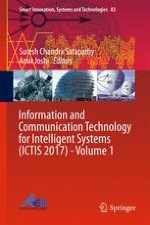This volume includes 74 papers presented at ICTIS 2017: Second International Conference on Information and Communication Technology for Intelligent Systems. The conference was held on 25th and 26th March 2017, in Ahmedabad, India and organized jointly by the Associated Chambers of Commerce and Industry of India (ASSOCHAM) Gujarat Chapter, the G R Foundation, the Association of Computer Machinery, Ahmedabad Chapter and supported by the Computer Society of India Division IV – Communication and Division V – Education and Research. The papers featured mainly focus on information and communications technology (ICT) for computation, algorithms and data analytics. The fundamentals of various data analytics and algorithms discussed are useful to researchers in the field.
